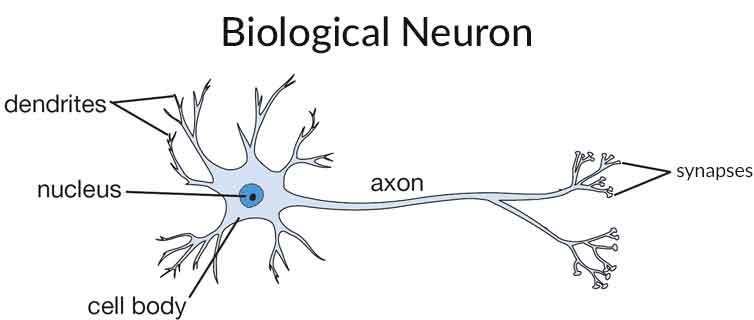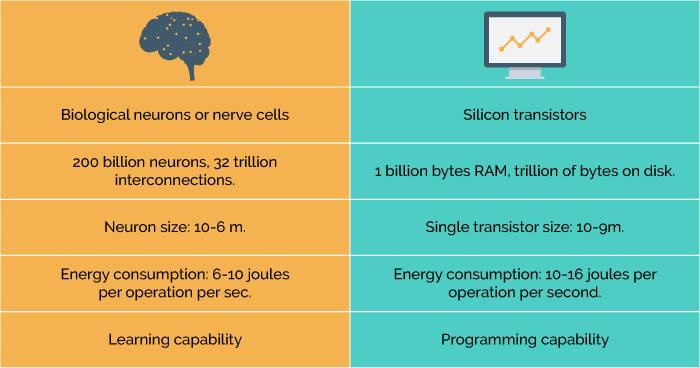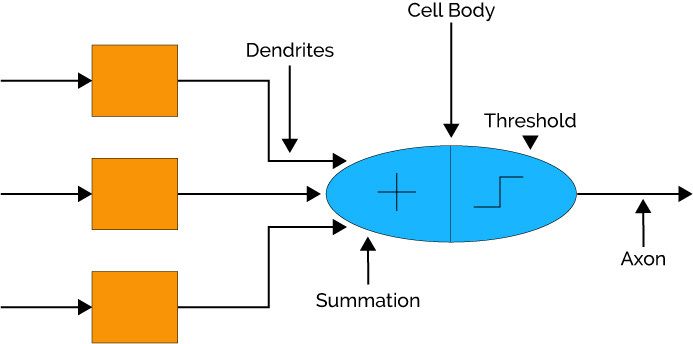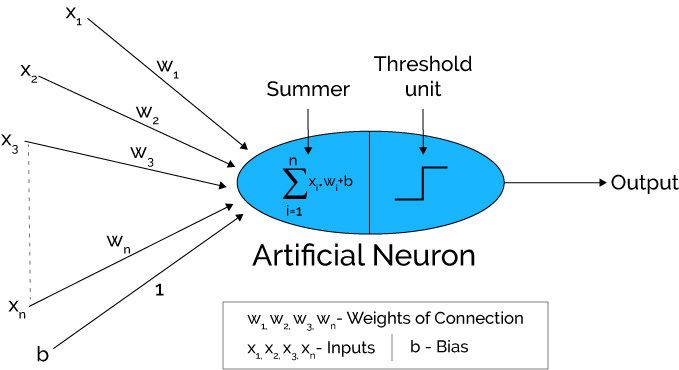Overview of Artificial Neural Networks and its Applications
**What is Neural Network? ** The term ‘Neural’ is derived from the human (animal) nervous system’s basic functional unit ‘neuron’ or nerve cells which are present in the brain and other parts of the human (animal) body. Structure of Neurons in Brain**** The ...

**What is Neural Network? **
The term ‘Neural’ is derived from the human (animal) nervous system’s basic functional unit ‘neuron’ or nerve cells which are present in the brain and other parts of the human (animal) body.
Structure of Neurons in Brain****
The typical nerve cell of human brain comprises of four parts -
 Dendrite - It receives signals from other neurons.
Dendrite - It receives signals from other neurons.
Soma (cell body) - It sums all the incoming signals to generate input.
Axon - When the sum reaches a threshold value, neuron fires and the signal travels down the axon to the other neurons.
Synapses - The point of interconnection of one neuron with other neurons. The amount of signal transmitted depend upon the strength (synaptic weights) of the connections.
The connections can be inhibitory (decreasing strength) or excitatory (increasing strength) in nature.
So, neural network, in general, is a highly interconnected network of billions of neuron with trillion of interconnections between them.
How is Brain Different from Computers?

What is Artificial Neural Network?****
Artificial Neural Networks are the biologically inspired simulations performed on the computer to perform certain specific tasks like clustering, classification, pattern recognition etc.
Artificial Neural Networks, in general - is a biologically inspired network of artificial neurons configured to perform specific tasks.
Similarity of ANN with Biological Neural Network
Neural networks resemble the human brain in the following two ways -
A neural network acquires knowledge through learning.
A neural network's knowledge is stored within inter-neuron connection strengths known as synaptic weights.
Analogy of Artificial Neural Network With Biological Neural Network

The dendrites in biological neural network is analogous to the weighted inputs based on their synaptic interconnection in artificial neural network.
Cell body is analogous to the artificial neuron unit in artificial neural network which also comprises of summation and threshold unit.
Axon carry output that is analogous to the output unit in case of artificial neural network. So, ANN are modelled using the working of basic biological neurons.
How Does Artificial Neural Network Works?

Artificial neural networks can be viewed as weighted directed graphs in which artificial neurons are nodes and directed edges with weights are connections between neuron outputs and neuron inputs.
The Artificial Neural Network receives input from the external world in the form of pattern and image in vector form. These inputs are mathematically designated by the notation x(n) for n number of inputs.
Each input is multiplied by its corresponding weights. Weights are the information used by the neural network to solve a problem. Typically weight represents the strength of the interconnection between neurons inside the neural network.
The weighted inputs are all summed up inside computing unit (artificial neuron). In case the weighted sum is zero, bias is added to make the output not- zero or to scale up the system response. Bias has the weight and input always equal to ‘1'.
The sum corresponds to any numerical value ranging from 0 to infinity. In order to limit the response to arrive at desired value, the threshold value is set up. For this, the sum is passed through activation function.
The activation function is set of the transfer function used to get desired output. There are linear as well as the non-linear activation function.
Some of the commonly used activation function are - binary, sigmoidal (linear) and tan hyperbolic sigmoidal functions(nonlinear).
Binary - The output has only two values either 0 and 1. For this, the threshold value is set up. If the net weighted input is greater than 1, an output is assumed 1 otherwise zero.
Sigmoidal Hyperbolic - This function has ‘S’ shaped curve. Here tan hyperbolic function is used to approximate output from net input. The function is defined as - f (x) = (1/1+ exp(-
